In recent years, the contact grill market has experienced a significant surge in popularity, not just as a convenient cooking option but also as a symbol of culinary innovation. This article delves into the evolving landscape of contact grill factories, exploring their technological advancements, the challenges they face, and the opportunities that lie ahead. As we navigate through these dynamics, it becomes clear that contact grill factories play a pivotal role in shaping the global kitchen appliances industry.
Understanding Contact Grill Market Dynamics in Europe and America
Contact grills, also known as flat grills or indoor grills, have become increasingly popular in both Europe and America. These versatile cooking appliances are designed to simulate the outdoor grilling experience, allowing homeowners to enjoy deliciously charred and flavorful foods right in their kitchens. Understanding the market dynamics of contact grills in these regions requires a look at current trends, consumer preferences, and the competitive landscape.
In Europe, the contact grill market is characterized by a blend of traditional and innovative cooking technologies. Consumers in this region value convenience, health, and the ability to recreate the taste of outdoor grilling. The market has seen steady growth, driven by factors such as rising urbanization and the desire for quick yet healthy meals. European contact grill manufacturers have responded by offering a variety of models that cater to different cooking styles and budgets.
One notable trend in Europe is the preference for compact and multi-functional contact grills. These devices often come with features like variable heat settings, removable drip trays for easy cleaning, and non-stick surfaces to ensure minimal mess and effortless cooking. The European market is also seeing an increase in the adoption of smart grills that can be controlled via smartphone apps, allowing users to monitor and adjust cooking times and temperatures remotely.
In America, the contact grill market is distinct due to the diverse cultural backgrounds and culinary traditions. American consumers are known for their love of outdoor cooking, which has influenced the indoor grilling trend. The market is marked by a strong focus on grilling accessories and innovations that enhance the grilling experience. This includes models with built-in smokers, rotisseries, and even electric grills that can sear, sauté, and bake.
The American contact grill market is driven by the demand for high-quality and durable appliances. Consumers here are willing to invest in premium brands that offer superior performance and reliability. The market has also seen a rise in eco-friendly options, with some contact grill manufacturers focusing on energy efficiency and sustainable materials.
Another significant trend in the American market is the rise of contact grills that cater to specific dietary needs, such as those designed for grilling with little to no oil, which appeals to health-conscious consumers. The competitive landscape is diverse, with both well-established kitchen appliance brands and specialized manufacturers vying for market share.
Both Europe and America have unique distribution channels for contact grills. In Europe, the market is well-served by large home appliance retailers and specialized kitchen stores. Online sales are also gaining traction, as more consumers turn to e-commerce for convenience and access to a wider range of products. In the United States, brick-and-mortar retailers dominate, with significant sales also coming from online marketplaces.
When it comes to pricing, the contact grill market in Europe is generally more affordable compared to the U.S. However, this doesn’t necessarily reflect the quality of the products, as both regions offer a wide range of price points to suit different consumer segments. In the U.S., the higher average price tag is often attributed to the inclusion of advanced features and the perception of higher quality.
In conclusion, the contact grill market in both Europe and America is dynamic and evolving. It is shaped by the interplay of consumer preferences, technological advancements, and the competitive landscape. As manufacturers continue to innovate and adapt to changing market needs, the future of contact grills in these regions looks promising, with opportunities for further growth and diversification.
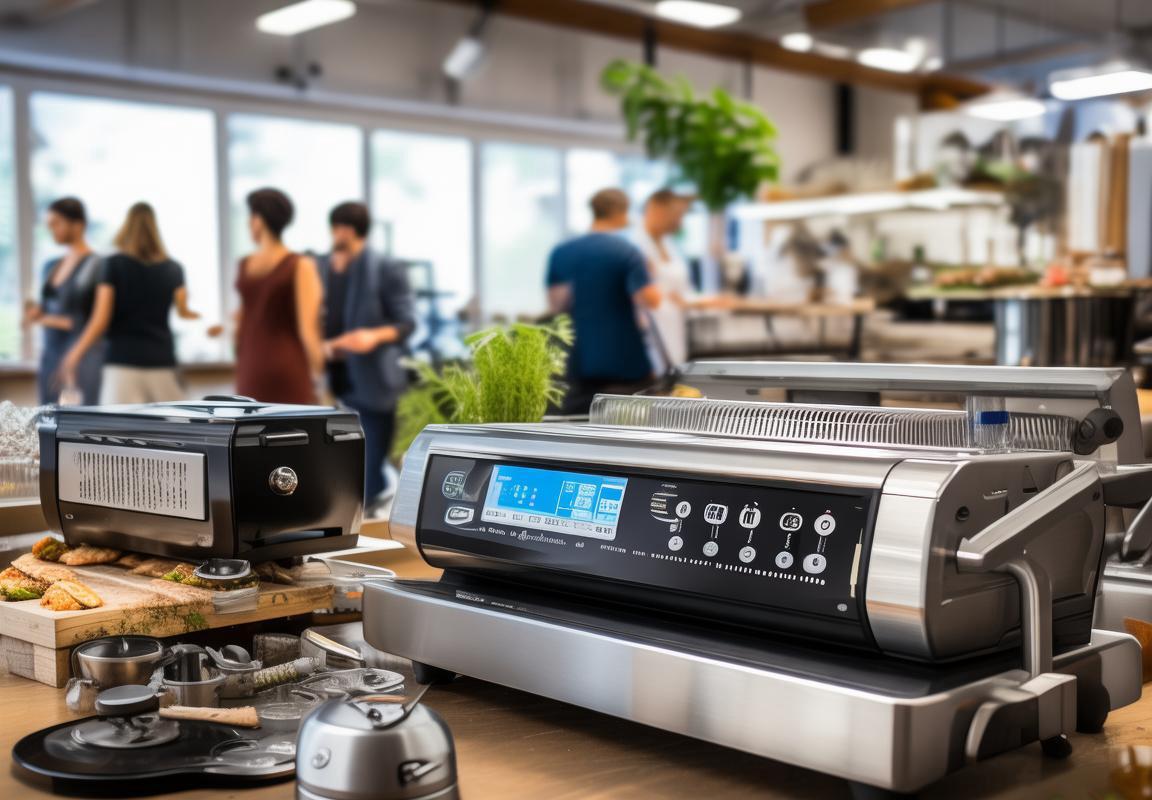
The Rise of Contact Grills: A Brief Overview
The contact grill, once a niche product, has seen a meteoric rise in popularity across Europe and America. This compact cooking appliance, which sandwiches food between two heating elements to create a perfect sear, has captured the hearts and taste buds of culinary enthusiasts. Let’s delve into the factors that have contributed to this surge in demand.
Grills have always been a staple in outdoor cooking, but the convenience of indoor contact grills has revolutionized the way people prepare meals at home. These versatile appliances can handle a variety of foods, from steak and burgers to vegetables and sandwiches, making them a must-have for anyone looking to add a smoky, grilled flavor to their dishes.
One of the primary reasons for the contact grill’s popularity is its ease of use. With minimal cleanup and quick cooking times, these grills have become a favorite among busy professionals and families alike. The compact size also means they can be easily stored in small kitchens or on countertops, making them a practical choice for those with limited space.
The innovation in technology has also played a significant role in the rise of contact grills. Modern units often come equipped with non-stick surfaces, adjustable temperature controls, and even integrated lighting to ensure that cooking is both efficient and enjoyable. Features like these have helped to bridge the gap between outdoor grilling and indoor cooking, allowing for a more authentic grilling experience in the comfort of one’s own home.
As health and wellness have become increasingly important, contact grills have stepped into the spotlight. These appliances enable users to cook with less oil, which can lead to healthier meals with fewer calories and less fat. This health-conscious approach has resonated with consumers who are looking for ways to incorporate healthier cooking methods into their daily routines.
In Europe, the contact grill market has seen significant growth, with a particular focus on premium and luxury models. Brands like T-fal, George Foreman, and Breville have become synonymous with quality and innovation in the segment. The European consumer is known for their preference for high-quality, durable products, and contact grills have been no exception.
Similarly, in America, the market has expanded rapidly, driven by the demand for convenience and health. The American consumer has embraced the contact grill as a time-saving tool that also delivers on taste and quality. The rise of food blogs and social media has also played a role in popularizing the contact grill, with influencers showcasing their culinary creations using these appliances.
Another factor contributing to the contact grill’s rise is the variety of recipes and cooking techniques that can be applied. From classic recipes like steak and burgers to more adventurous dishes like grilled pizza and fruit kebabs, the versatility of contact grills has made them a favorite among both beginners and seasoned chefs.
The environmental impact of cooking methods has also become a consideration for many consumers. Contact grills, with their energy-efficient design and reduced need for preheating, have become a more eco-friendly option compared to traditional stovetop cooking. This green aspect has further bolstered the contact grill’s appeal, especially among environmentally conscious consumers.
In conclusion, the contact grill’s rise in popularity in Europe and America can be attributed to its convenience, technological advancements, health benefits, and versatility. As the market continues to grow, we can expect to see even more innovative features and designs that cater to the evolving needs and preferences of consumers. The contact grill has truly become a staple in modern kitchens, offering a unique blend of traditional grilling experience and modern convenience.
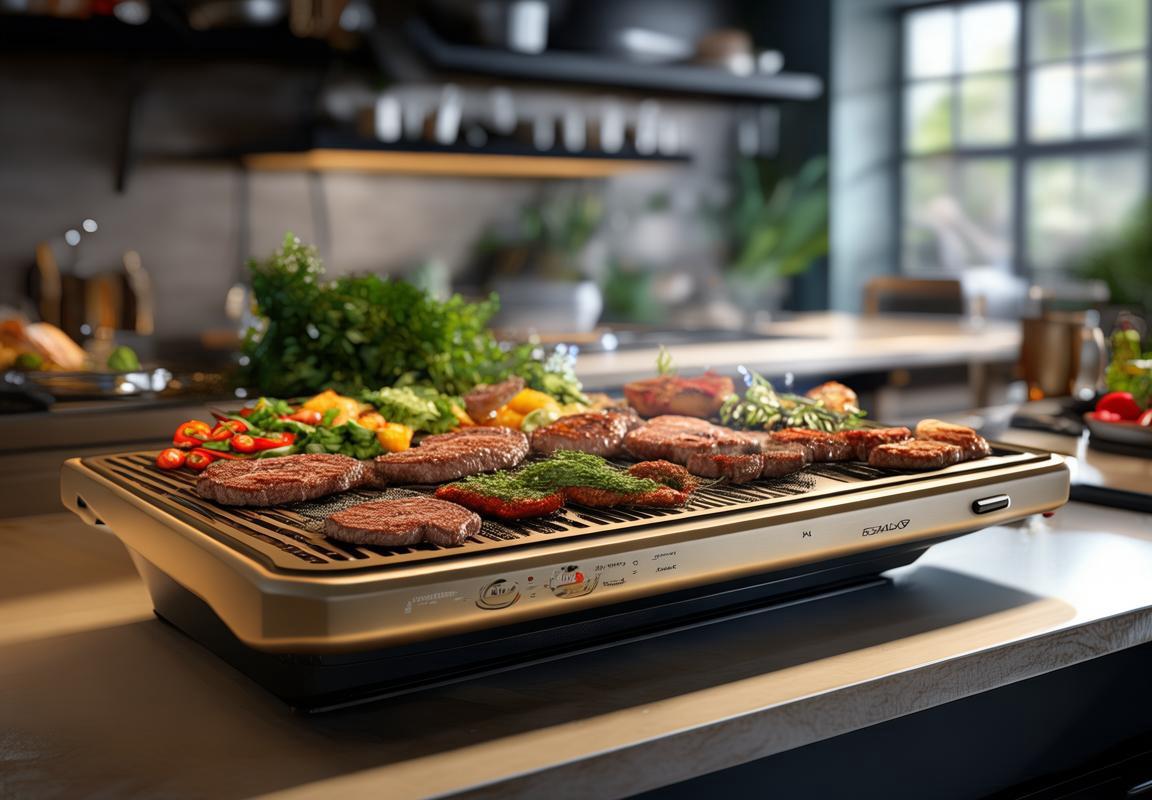
Contact Grill Factory Landscape in Europe
The contact grill market in Europe has experienced a significant surge in popularity, driven by a blend of consumer preferences, technological advancements, and the demand for healthier cooking methods. As we delve into the landscape of contact grill factories in Europe, several key aspects come to light.
Europe’s contact grill factories are known for their commitment to quality and innovation. These factories often produce a variety of contact grills, ranging from compact, countertop models to large, commercial-grade units suitable for restaurants and caterers. The manufacturing process in these factories is highly sophisticated, with a focus on precision engineering and the use of high-quality materials.
One of the notable trends in European contact grill factories is the emphasis on eco-friendly production. Many of these facilities have adopted green manufacturing practices, including energy-efficient machinery, sustainable sourcing of raw materials, and waste reduction strategies. This eco-conscious approach is not only appealing to environmentally conscious consumers but also contributes to the overall brand image of these factories.
In terms of design, European contact grill factories are at the forefront of integrating modern aesthetics with practical functionality. The sleek, minimalist designs often feature non-stick surfaces and durable construction, making them not just a cooking tool but also a stylish addition to any kitchen. These grills are also known for their versatility, capable of grilling, searing, and even frying with minimal oil, which aligns with the growing health and wellness trends in European cuisine.
The competitive landscape within European contact grill factories is marked by a mix of large corporations and smaller, family-owned businesses. Large manufacturers like Gaggenau, Miele, and Thermador have a strong presence, offering a range of high-end products that cater to premium markets. On the other hand, smaller factories like Frico and GEFRA are known for their unique designs and innovative features, often targeting niche markets and offering more specialized solutions.
Regional preferences play a significant role in the European contact grill market. For instance, in Germany, there’s a preference for robust and efficient appliances, which is reflected in the production processes of German contact grill factories. In contrast, Italian factories might focus more on aesthetics and culinary innovation, leading to a variety of models that are both visually appealing and functional.
Safety and ease of use are paramount in the design and manufacturing of contact grills in Europe. European contact grill factories prioritize safety certifications and compliance with rigorous standards. This ensures that consumers can enjoy their grilling experience without compromising on their health or the integrity of the food. Additionally, many of these grills come with user-friendly features such as digital temperature controls, automatic shut-off functions, and easy-to-clean surfaces.
The distribution channels for contact grills in Europe are diverse, including both brick-and-mortar retailers and online platforms. Factory-direct sales, partnerships with large kitchen appliance chains, and direct-to-consumer marketing are common strategies used by contact grill manufacturers. The digital marketplace has also opened new avenues for reaching customers, with e-commerce platforms becoming a significant sales channel.
Innovation is a constant in the European contact grill factory landscape. Continuous research and development efforts are directed towards improving the cooking performance, durability, and user experience of these grills. Smart features, such as Wi-Fi connectivity and the ability to control the grill remotely via an app, are becoming increasingly common, reflecting the broader trend of smart kitchen appliances in Europe.
The European contact grill market is also influenced by international trade agreements and global supply chains. While local manufacturing is highly valued, many factories also source components from around the world, which can impact production costs and lead times. This interconnectedness allows for the exchange of ideas and technologies, further fueling innovation within the industry.
In conclusion, the contact grill factory landscape in Europe is a vibrant and dynamic sector, characterized by a blend of traditional craftsmanship and cutting-edge technology. From the emphasis on eco-friendly practices to the integration of smart features and the focus on safety and usability, European contact grill factories are setting the standard for the global market. As consumer tastes continue to evolve, these factories are poised to lead the way in shaping the future of contact grilling technology.
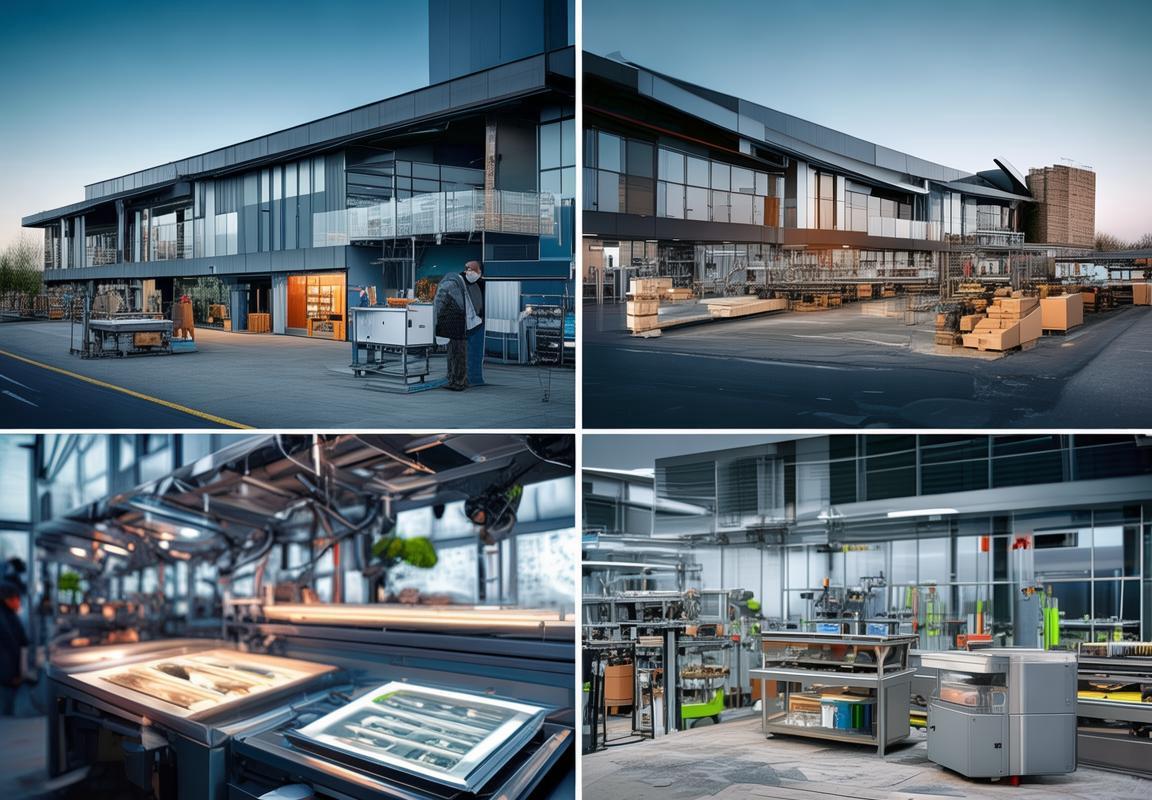
Contact Grill Factory Landscape in America
In the heart of the United States, contact grill factories have emerged as pivotal players in the kitchen appliance industry. These factories, scattered across various states, cater to a market that’s both diverse and highly competitive. Here’s a closer look at the dynamic landscape of contact grill manufacturing in America.
The geographical distribution of contact grill factories in America is quite varied. States like California, Texas, and Ohio are known for their robust manufacturing sectors, and it’s no different for contact grill production. These states offer a blend of skilled labor, advanced technology, and a supportive infrastructure that makes them ideal for setting up such factories.
California, in particular, stands out as a hub for innovation and technology. Contact grill factories here often incorporate cutting-edge manufacturing techniques and are at the forefront of introducing new features and designs. The state’s proximity to a large consumer base and its reputation for high-quality products make it a prime location for these factories.
Texas, on the other hand, is recognized for its vast industrial parks and a workforce that’s both skilled and diverse. Contact grill factories in Texas benefit from a strong supply chain and a business-friendly environment, which helps in keeping production costs competitive.
Ohio’s contact grill factories, while not as technologically advanced as those in California, offer a solid foundation in traditional manufacturing practices. They often produce a wide range of contact grills, from entry-level models to premium, high-end units.
The market size of contact grill production in America is substantial, with a consistent annual growth rate. This growth is driven by several factors, including the increasing popularity of outdoor cooking, the rising demand for healthier cooking methods, and the integration of smart technology in kitchen appliances.
Consumer preferences in America lean towards convenience and efficiency. Contact grill factories have responded by producing appliances that not only grill food evenly but also offer features like adjustable heat settings, non-stick surfaces, and easy-to-clean designs. These factors have contributed to the market’s steady expansion.
In terms of key players, the American contact grill market is dominated by a few major brands. These companies have established themselves through years of innovation and a deep understanding of consumer needs. They invest heavily in research and development to ensure their products remain at the forefront of the market.
Collaborations and partnerships are also a common sight in the American contact grill factory landscape. Many manufacturers work closely with retailers to gain insights into consumer trends and preferences. This symbiotic relationship helps factories tailor their production to meet the demands of the market.
Safety and quality control are paramount in the American contact grill industry. Factories adhere to stringent regulations and standards to ensure that their products are not only safe but also reliable. Regular inspections and certifications are part of the standard operating procedure for these factories.
Despite the robust growth and success of contact grill factories in America, challenges persist. The cost of labor and materials continues to rise, putting pressure on production costs. Additionally, the rise of e-commerce has changed the way consumers purchase kitchen appliances, requiring factories to adapt their distribution strategies.
Innovation remains a cornerstone of the American contact grill factory landscape. There’s a constant push to develop new materials, improve manufacturing processes, and introduce features that enhance the user experience. Smart grills with integrated cooking apps and wireless connectivity are just a few examples of the innovative strides being made.
The American contact grill market is also influenced by global trends. As health consciousness grows, there’s an increasing demand for contact grills that can cook food with minimal oil, promoting healthier eating habits. This shift has prompted factories to explore alternative cooking methods and materials.
In conclusion, the contact grill factory landscape in America is marked by a blend of innovation, competition, and a focus on consumer satisfaction. The industry’s ability to adapt to changing market dynamics and consumer preferences will be crucial in shaping its future.
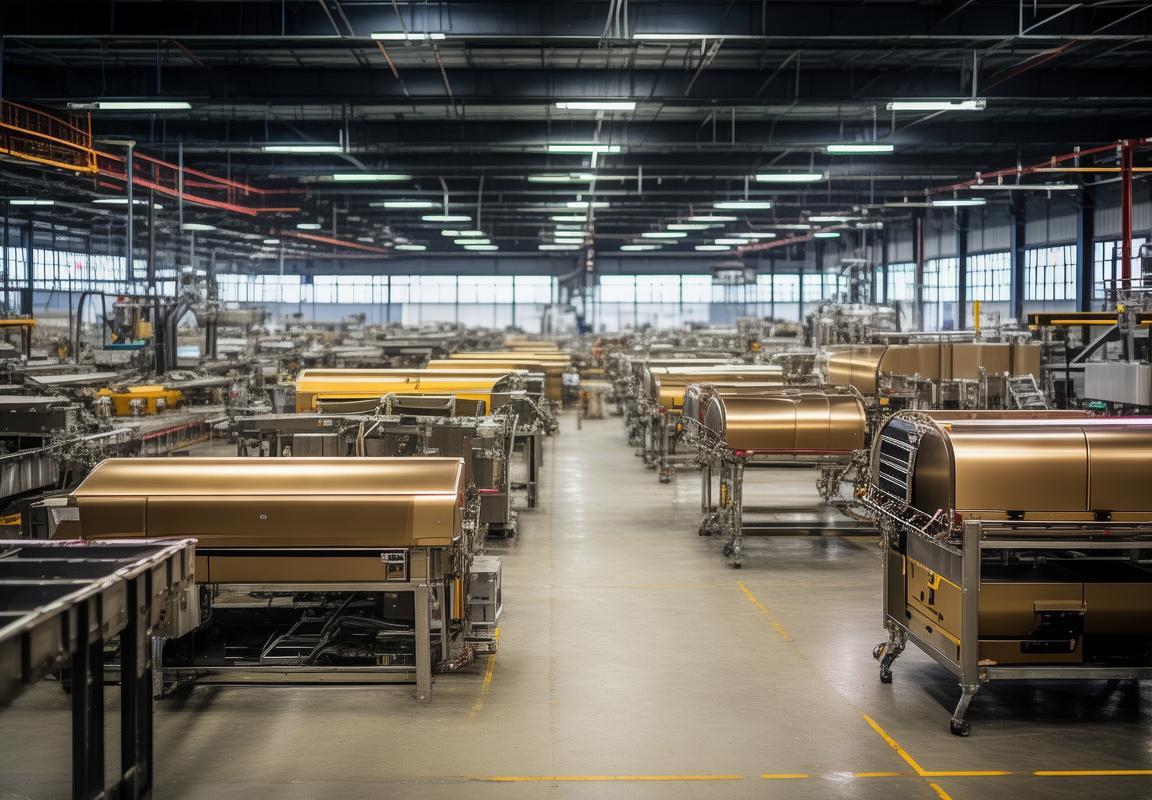
Technological Advancements in Contact Grill Manufacturing
In recent years, the contact grill market has seen a surge in technological advancements, transforming the way these cooking appliances are manufactured and used. These innovations not only enhance the user experience but also address concerns related to health, convenience, and environmental sustainability.
Smart features have become a cornerstone of modern contact grill manufacturing. These features include integrated touchscreens that allow for precise temperature control and cooking time settings, making it easier for users to achieve their desired level of doneness. Smart grills can often connect to smartphones through apps, providing real-time feedback and allowing for remote monitoring and control. This connectivity not only adds a layer of convenience but also opens up possibilities for data collection and analytics, which can lead to improved product design and user experience.
Energy efficiency is another critical aspect of contact grill manufacturing that has seen significant improvements. Early models of contact grills were often criticized for their energy consumption, which could be substantial when cooking for extended periods. However, with the advent of new materials and technologies, modern contact grills are designed to cook food more quickly and efficiently. This is achieved through better heat distribution, improved insulation, and the use of high-quality heating elements that maintain consistent temperatures throughout the cooking process.
The safety and health benefits of contact grills have also been a focal point for technological advancements. Non-stick coatings have been refined to reduce the need for excessive oil, which not only cuts down on fat content in food but also makes cleaning easier. Some grills now come with adjustable cooking temperatures, allowing users to cook at lower temperatures and reduce the risk of charring, which can release harmful chemicals. Additionally, many models are equipped with automatic shut-off features to prevent accidents, especially important when the grill is left unattended.
Sustainability has become a buzzword in manufacturing across all industries, and contact grill manufacturing is no exception. Manufacturers are increasingly focusing on the environmental impact of their products. This includes the use of recyclable materials in the construction of contact grills, the reduction of packaging waste, and the promotion of energy-efficient practices in the manufacturing process. Some companies are even exploring the use of solar power in the production of their appliances to further minimize their carbon footprint.
Innovation in contact grill manufacturing is also evident in the design of the cooking surfaces. Traditional grills have flat surfaces, but modern models often feature grooves or channels that help drain excess fat away from the food, further improving health benefits. These surfaces are also engineered to provide a better grip on the food, reducing the risk of it sticking or falling apart during cooking.
Maintenance and cleaning have also been streamlined with the introduction of self-cleaning modes. These modes use high temperatures to burn off food residue and then clean the cooking surface with a water spray, which can be a significant timesaver for busy cooks.
Lastly, there’s a growing emphasis on user-friendliness. Newer contact grills come with intuitive interfaces, easy-to-read displays, and even voice control in some cases. This has made the cooking process more accessible to a wider range of users, including those with visual impairments or those who are less tech-savvy.
The technological advancements in contact grill manufacturing are a testament to the industry’s commitment to innovation. As consumer demands evolve, it’s clear that contact grills will continue to be refined, offering a combination of performance, health benefits, and convenience that is hard to match in other cooking appliances.
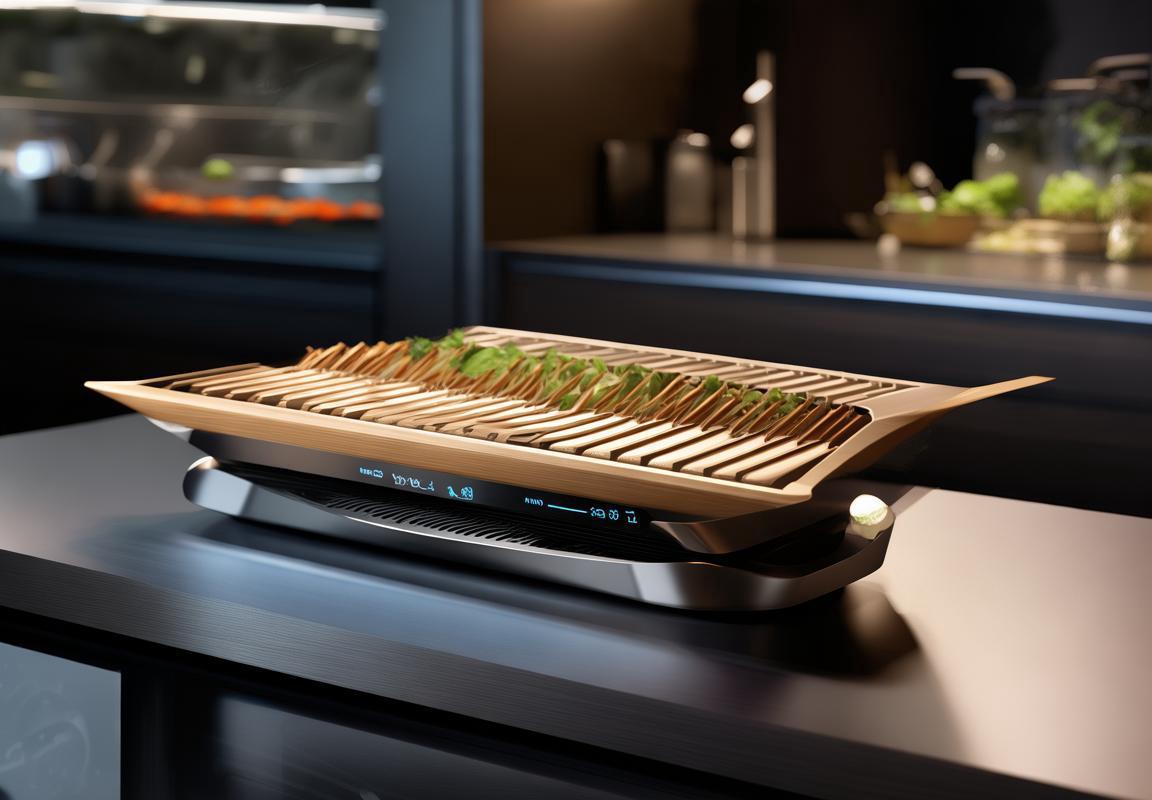
Challenges and Opportunities for Contact Grill Factories
In the competitive landscape of contact grill manufacturing, several challenges and opportunities coexist, shaping the future of this sector. Navigating these complexities is crucial for factories aiming to thrive in a rapidly evolving market.
The demand for healthier cooking options has surged, presenting an opportunity for contact grill factories to innovate and offer products that cater to this trend. Consumers are increasingly aware of the health risks associated with traditional grilling methods, which often involve higher oil temperatures and potential for charring. Contact grills, with their even heating and ability to lock in flavors, offer a healthier alternative that requires less oil.
As sustainability becomes a more pressing global issue, contact grill factories have the chance to align their operations with eco-friendly practices. This could involve sourcing materials from sustainable sources, reducing energy consumption through efficient manufacturing processes, and designing products that are easier to recycle at the end of their lifecycle. By embracing these green initiatives, factories can not only contribute to a healthier planet but also appeal to environmentally conscious consumers.
The integration of smart technology is another opportunity for contact grill factories. By incorporating features like Wi-Fi connectivity, digital temperature control, and recipe guidance, these appliances can become an integral part of the modern kitchen. Such advancements not only enhance the user experience but also open up new avenues for data collection and personalized cooking advice, which can be valuable for both the consumer and the manufacturer.
However, alongside these opportunities, contact grill factories face a set of challenges. One significant challenge is the need for constant innovation to stay ahead of the competition. The market is saturated with various grill models, and each new product must offer unique features or superior performance to capture consumer interest. This requires significant investment in research and development, which can be a strain on factory resources.
Regulatory compliance is another hurdle. Contact grill factories must adhere to stringent safety standards, which can vary by country. Ensuring that products meet these standards without compromising on quality or innovation is a delicate balance. Additionally, navigating the complexities of international trade and tariffs can be challenging, especially for companies looking to expand into new markets.
Quality control is a persistent challenge in the manufacturing sector, and contact grills are no exception. Ensuring that each unit meets the same high standards can be difficult, especially as factories scale up production. The cost of maintaining strict quality control measures can be high, but it is essential for maintaining the brand’s reputation and customer satisfaction.
The rise of e-commerce has also presented both a challenge and an opportunity for contact grill factories. While online sales offer a broader market reach, they also mean that factories must compete with a multitude of retailers, including large online marketplaces. This competition can drive down prices, putting pressure on profit margins. However, e-commerce also allows for direct customer engagement, providing valuable feedback that can be used to improve products and services.
In terms of supply chain management, contact grill factories must grapple with the volatility of global markets. Fluctuations in raw material prices, changes in shipping costs, and disruptions due to political or economic instability can all impact production and pricing. Developing robust supply chain strategies that mitigate these risks is a crucial challenge for these factories.
Lastly, the need for skilled labor remains a challenge. The manufacturing sector has long faced a skills gap, and contact grill factories are no different. Ensuring that factories have access to a skilled workforce that can operate advanced machinery and maintain high production standards is a ongoing concern.
In summary, while the contact grill manufacturing sector presents numerous opportunities for growth and innovation, it is not without its challenges. Factories must navigate the complexities of consumer demands, regulatory landscapes, and global market dynamics to remain competitive and sustainable in the long term. By embracing these opportunities and addressing the challenges head-on, contact grill factories can continue to play a pivotal role in the evolution of kitchen appliances.
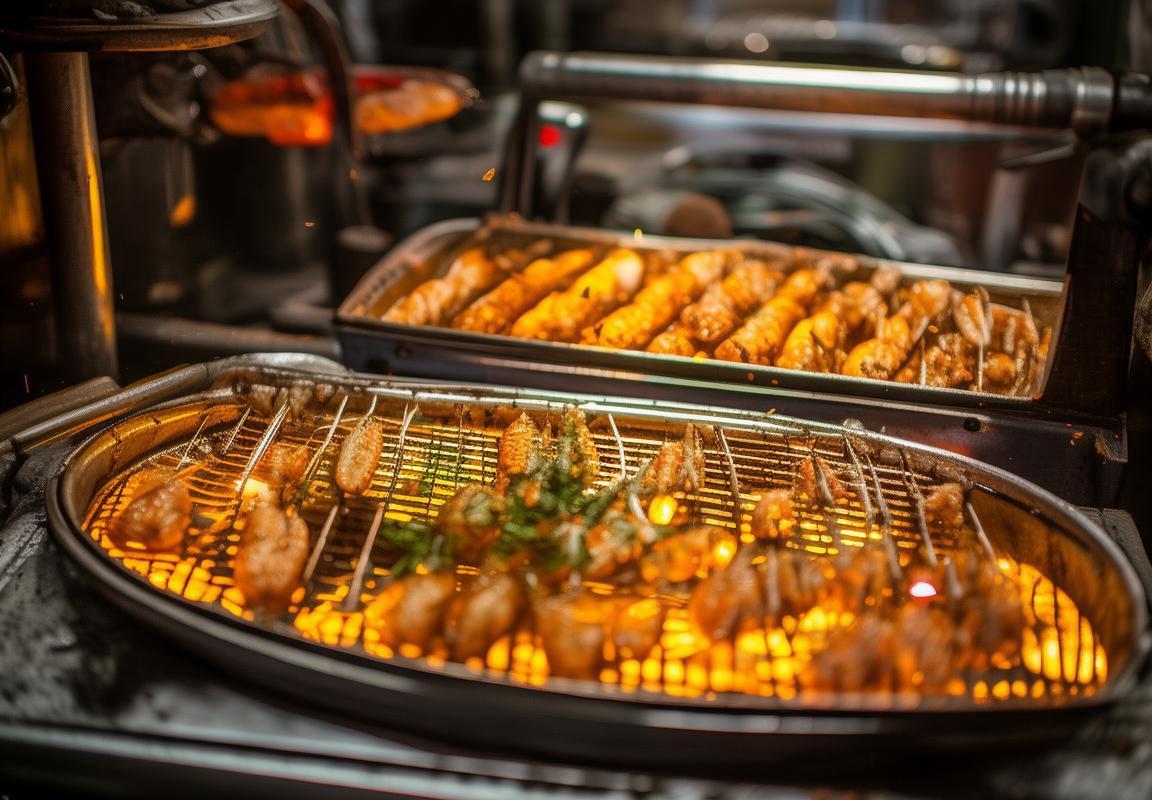
Predictions for the Future of Contact Grill Manufacturing
The contact grill market has seen remarkable growth over the years, driven by advancements in technology and changing consumer preferences. As we look to the future, several trends are shaping the landscape of contact grill manufacturing. Here’s a glimpse into the potential future:
Innovative Heat Distribution SystemsManufacturers are increasingly focusing on enhancing heat distribution systems to ensure even cooking and to minimize the risk of burning. Newer models are being developed with more precise temperature control, allowing users to cook a wider variety of foods without the fear of uneven cooking or charring.
Smart Integration and ConnectivityWith the rise of the Internet of Things (IoT), contact grills are becoming more connected than ever before. Smart integration means that these grills can be controlled via smartphone apps, providing users with the ability to monitor and adjust settings remotely. This not only adds convenience but also opens up opportunities for data collection that can be used to improve future products.
Sustainability and Eco-Friendly MaterialsThe environmental impact of products is a growing concern for consumers. Contact grill factories are responding by using more sustainable materials and energy-efficient designs. This could include using recycled materials, reducing waste during production, and developing grills that consume less power, aligning with a broader shift towards eco-conscious consumerism.
Personalization and CustomizationThe future of contact grill manufacturing may see a surge in personalization and customization options. From different grill patterns to variable temperature settings, consumers will have more control over their cooking experience. This could involve 3D printing technology to create custom grill plates that cater to specific food types or dietary needs.
Health and Wellness FocusAs the health and wellness trend continues to gain momentum, contact grill factories are likely to focus on creating products that support a healthier lifestyle. This could include grills with non-stick coatings that reduce the need for oil, or models that offer cooking at lower temperatures to preserve more nutrients in food.
Globalization and Market ExpansionContact grill manufacturers are not only looking at domestic markets but are also eyeing international growth. As these companies expand into new regions, they will need to adapt their products to meet local preferences and regulations. This could lead to a diverse range of products tailored to different cuisines and cooking styles.
Increased Focus on Safety and DurabilitySafety is always a priority in any product manufacturing, but the future may see an even greater emphasis on safety features. This includes improved non-slip bases, cool-to-the-touch handles, and enhanced durability to withstand regular use. As the competition heats up, manufacturers will need to differentiate their products based on safety and reliability.
The Role of Artificial IntelligenceAI and machine learning are poised to play a significant role in the future of contact grill manufacturing. From predictive maintenance to smart inventory management, AI can help factories streamline operations and reduce costs. Additionally, AI could be used to analyze customer data, leading to more targeted marketing and product development.
Adaptation to Changing RegulationsRegulations regarding emissions, safety standards, and food safety are constantly evolving. Contact grill factories will need to stay abreast of these changes to ensure compliance. This could involve investing in new technologies or rethinking production processes to meet the latest regulatory requirements.
In conclusion, the future of contact grill manufacturing is likely to be marked by innovation, sustainability, and a focus on customer needs. As technology continues to advance, consumers can expect more features, greater convenience, and a broader range of options to choose from.

Conclusion: The Role of Contact Grill Factories in the Global Kitchen Appliances Industry
In the ever-evolving landscape of the kitchen appliances industry, contact grill factories play a pivotal role. These specialized manufacturers are not just responsible for producing the latest and greatest in contact grill technology; they are also shaping the way we cook and live. As we delve into the conclusion of this exploration, it’s clear that the role of contact grill factories is multifaceted, intertwining innovation, sustainability, and consumer satisfaction.
The integration of smart technology in contact grills has transformed the cooking experience, offering users a level of convenience and precision that was once unimaginable. Factories are at the forefront of this technological revolution, continuously pushing the boundaries of what a contact grill can do. From digital temperature control to wireless connectivity, these advancements have not only made cooking easier but have also expanded the possibilities for culinary experimentation.
Moreover, contact grill factories are increasingly focusing on sustainability. With environmental concerns at the forefront of consumer consciousness, these manufacturers are adopting eco-friendly practices in their production processes. From using recycled materials to reducing energy consumption, the commitment to sustainability is evident in the products that emerge from these factories. This shift not only aligns with global trends but also resonates with the values of the modern consumer.
The role of contact grill factories extends beyond just manufacturing; they are also driving industry standards. As new innovations are developed, these factories often lead the way in setting new benchmarks for safety, performance, and quality. This leadership position is crucial in ensuring that the global market is supplied with products that meet the highest standards, regardless of where they are purchased.
Consumer preferences are a cornerstone in the operations of contact grill factories. These manufacturers are adept at listening to the market and adapting their products to meet the demands of a diverse customer base. Whether it’s the need for versatile grilling options, health-conscious cooking solutions, or the desire for high-quality appliances, contact grill factories are adept at catering to these varied needs.
The global kitchen appliances industry is a dynamic and competitive field, and contact grill factories are no exception. They must navigate a complex web of challenges, from fluctuating raw material costs to the demands of an international market. Yet, within this complexity lie significant opportunities. Factories that can innovate, streamline their operations, and maintain a focus on quality and customer service will be the ones that thrive.
In the realm of innovation, contact grill factories are at the cutting edge. The integration of artificial intelligence and machine learning into the manufacturing process promises to revolutionize the way contact grills are produced. These advancements could lead to more efficient production lines, personalized product development, and predictive maintenance, all of which could significantly reduce costs and improve the overall quality of the final product.
The rise of the health-conscious consumer has also opened new doors for contact grill factories. As more people seek out healthier cooking methods, these factories are responding with a range of low-fat, low-heat cooking solutions. This shift towards healthier options is not only beneficial for consumers but also positions contact grill factories as leaders in the wellness movement.
In the realm of marketing and distribution, contact grill factories are finding new ways to connect with customers. E-commerce has become a significant channel for sales, and factories are investing in online platforms that not only showcase their products but also provide educational content and interactive features. This approach not only increases brand awareness but also fosters a community of loyal customers.
The future of contact grill manufacturing is bright, with a multitude of opportunities on the horizon. As the world becomes more interconnected, so does the kitchen appliances industry. Contact grill factories that can adapt to global trends, leverage technology, and prioritize the well-being of their customers will undoubtedly play a central role in shaping the future of the global kitchen appliances industry. Their commitment to innovation, sustainability, and customer satisfaction ensures that they will remain a driving force in this dynamic sector.